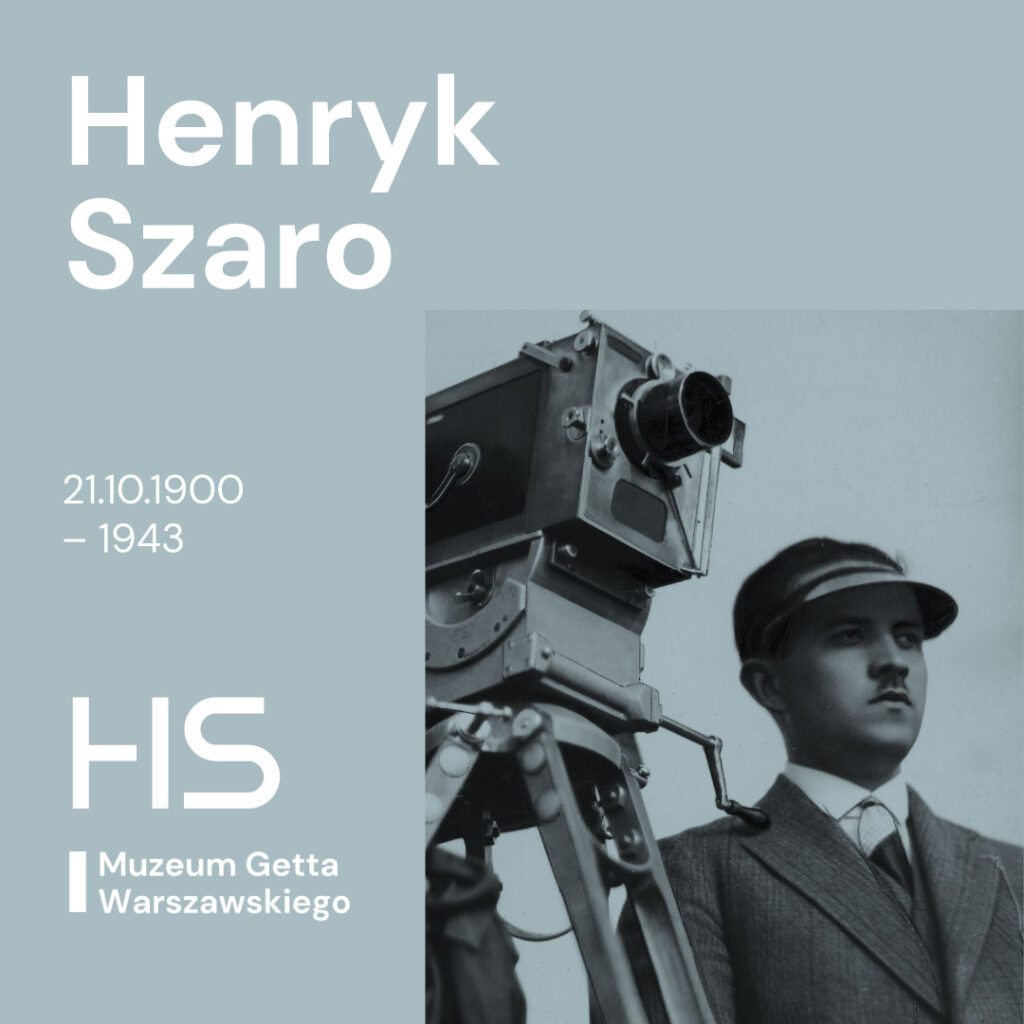Henryk Szaro (21.10.1900–1942)
film and theater director, screenwriter

He was born in Warsaw as Henoch Szapiro. His youth was spent in Russia: he graduated from the gymnasium in Saratov, then from the Institute of Communication Engineers in Petrograd and the famous school there at the Alexandrinsky Theater. Later he probably moved to Moscow, where he trained as an assistant to Vsevolod Meyerhold, a propagandist of constructivism in the theater, and Arbatov. In the early 1920s he staged his first performances at theaters in Petrograd.
In 1923 he went to Berlin, where he joined the Russian émigré cabaret Sinaja Ptica (“Blue Bird”). When the group came to Poland to perform a year later, Szaro decided to live permanently in Warsaw. He took the position of artistic director at the Warsaw Literary Theater “Stańczyk”. There he directed, among others, two one-act plays by the Russian playwright Nikolai Yevreinov: “Happy Death” and “School of the Stars”, in which he experimented with cinematography. Henryk Szaro was a co-founder of the Polish Association of Film Producers (1927), from which he left in 1936 to found the Association of Film Producers and Technicians. He also became an honorary member of the French Union des Artistes Cinematographiques in Nice (1929).
His film debut was “Rywale” (1925), in which Eugeniusz Bodo appeared on the screen for the first time. Szaro made a total of 15 films, including 7 silent films. A large part of his work was film adaptations of Polish novels, stage texts and folk legends: “Czerwony błazen” (1926), “Dzikuska” (1928), “Ordynat Michorowski” (1937), “Trójka rogajska” (1937), “Pan Twardowski” (1936), “Dzieje Grzechu” (1933), “Przedwiośnie” (1928) and “Mocny człowiek” (1929). It was the adaptation of Stanisław Przybyszewski’s novel that proved to be Szaro’s greatest success and is now considered one of the most outstanding works of Polish silent cinema. The director drew on the achievements of German Expressionism, the avant-garde and the Soviet editing school. He also tried his hand at entertainment cinema (“Zew morza,” 1927) or patriotic cinema (in collaboration with the Kineton Sfinks company) – “Na Sybir” (1930) and “1914” (1934). He took up Jewish themes in “Jeden z 36” (1925), which refers to the so-called Lamed-vovniks, and “Ślubowanie” – a film shot in Yiddish with a guest appearance by the choir of the Great Synagogue in Warsaw.
After the outbreak of the World War II he went to Vilnius, but after the beginning of the German-Soviet War he returned to Warsaw in the first half of 1942. He lived in the ghetto at Pańska St. During the liquidation of refugees from the East, he was taken from the apartment together with his father-in-law Goldman and shot in the street. The exact date of his death is not known; it was probably April, June or July 1942.

